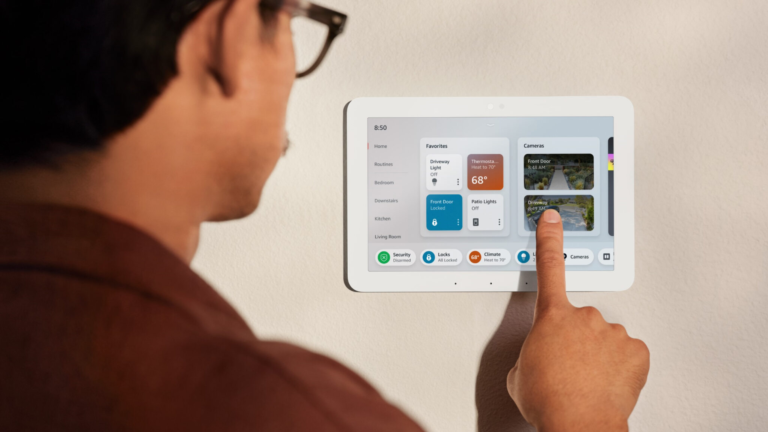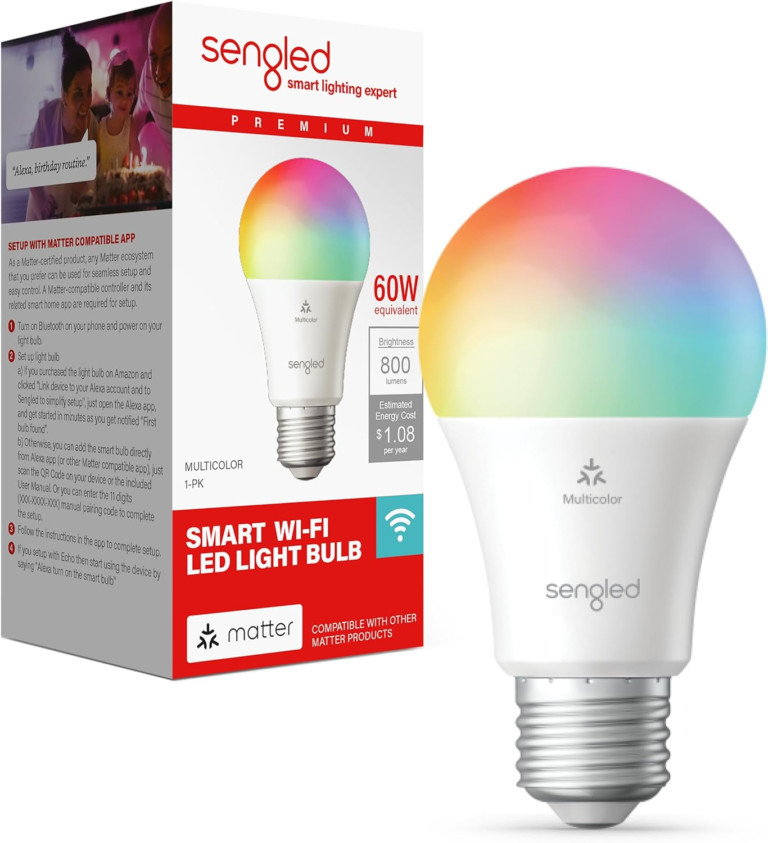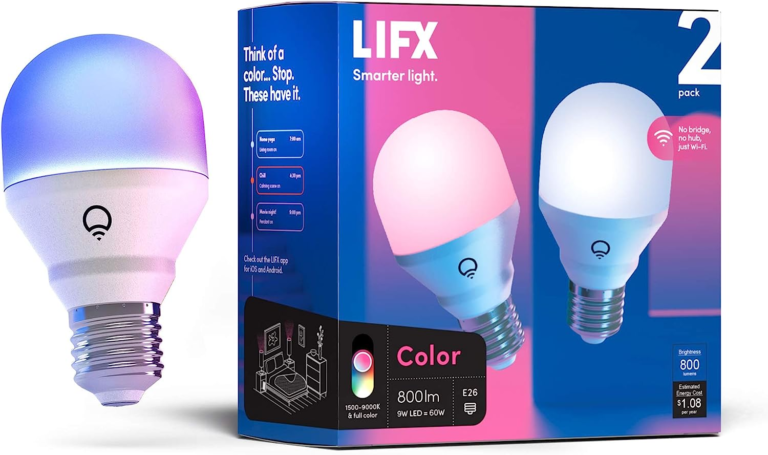The Ultimate Guide to Soundproofing Your Bedroom
Let’s dive into the world of peaceful slumber and how a whisper-quiet bedroom can be your secret weapon for better health and happiness. Ever been jarred awake by a car alarm or found yourself counting the ticks of a too-loud clock instead of sheep? You’re not alone.
Noise is a sleep thief, and in our quest for the zzz’s we deserve, turning our bedrooms into a quiet oasis isn’t just nice; it’s necessary.
Understanding Soundproofing Basics
Understanding Soundproofing Basics: Impact vs. Airborne Noise
Ever wondered why some nights feel quieter than others, even though the world outside seems just as bustling? The secret lies in understanding the types of noise invading your bedroom and how to tackle them effectively. Let’s break it down:
- Impact Noise: Think of this as the thud you hear when something drops on the floor above or the vibration of footsteps. It’s like sound waves crashing directly onto surfaces, causing a ripple effect that reaches you.
- Airborne Noise: This one travels through the air – the murmur of conversations, the whir of traffic, or the drone of an airplane. It sneaks in through the smallest openings, filling your room with sounds from the outside world.
The Battle Plan Depends on the Source
Just as you wouldn’t wear flip-flops to a snowball fight, the strategy for quieting your bedroom shifts based on where the noise comes from:
- Inside Intruders: For noises within your home, like the hum of the fridge or the echo of a TV, think about using your interior space creatively. Placing a bookshelf against a noisy wall or adding a plush rug can act as a buffer, absorbing the sound waves before they reach your ears.
- Outside Offenders: When the chaos comes from outside, such as street noise or a neighbor’s barking dog, sealing the perimeter becomes key. Insulating windows, reinforcing doors, and even strategic use of curtains and blinds can block those external sound waves, preserving your peace.
Simple DIY Soundproofing Methods
Creating a quiet bedroom doesn’t have to involve major renovations. Here are some straightforward DIY methods that can significantly reduce noise levels and enhance your sleep quality.
Seal Gaps and Doorways

Weather Strip
Foam Seal Tape 26 Feet Long
It’s surprising how much sound can seep through the tiniest gaps under and around doors. A simple and effective fix is to use weatherstripping and door sweeps. Weatherstripping is a type of sealant that can be applied to the edges of your door to block sound waves from entering.
Door Sweeps
Vellure® Door Draft Stopper for Bottom of Door

Door sweeps are attached to the bottom of the door and brush against the floor, preventing sound (and air) from slipping through. This budget-friendly solution can make a noticeable difference in minimizing noise intrusion.
Upgrade Your Door
Many interior doors are hollow-core, designed more for cost savings than sound insulation. These doors do little to block noise from traveling from room to room.
Replacing a hollow-core door with a solid-core door can dramatically reduce sound transmission. Solid-core doors are denser and significantly more effective at dampening sounds, making them a worthy investment for anyone looking to improve their room’s acoustics.
Acoustic Panels and Foam Paneling

For those dealing with echoey rooms or loud external noises, acoustic panels and foam paneling offer a solution. These materials are designed to absorb sound waves, reducing echo and making your room quieter.
They come in various sizes and styles, meaning they can double as decorative elements. Acoustic panels are particularly effective in rooms with hard surfaces that reflect sound, such as large windows or hardwood floors.
Rearranging Furniture
Sometimes, the solution is as simple as moving your furniture around. Heavy furniture like bookshelves, wardrobes, and upholstered items can absorb and block sound, improving your room’s overall acoustics.
Positioning these items against walls that are common sources of noise (external walls or walls shared with noisy rooms) can create a natural sound barrier. This method is not only cost-effective but also allows for creative room layouts.
Enhancing Soundproofing with Window Treatments and Wall Coverings
Soundproofing Curtains
Heavy curtains offer a dual benefit for those looking to enhance their bedroom’s soundproofing without sacrificing style. These aren’t your average drapes; soundproofing curtains are specifically designed with dense materials that can significantly reduce noise levels.

Sound Proof Curtain
RYB HOME Blackout Thermal Insulated Blind Curtains
They absorb sound waves, preventing them from bouncing around your room, and their thickness can block noise from entering through windows. Plus, with a variety of styles and colors available, they add a decorative touch while serving a functional purpose. Imagine a quiet, stylish room where outside noise is kept at bay, allowing you to relax or drift off to sleep in peac
Noise-Reducing Wallpaper
The walls of your bedroom are not just for hanging pictures; they can also be a key element in your soundproofing strategy. Enter noise-reducing wallpaper. This isn’t your grandmother’s wallpaper; it’s a modern solution to an age-old problem.

Noise Reducing Wallpaper
BUBOS 8 Pack Art Acoustic Panels Soundproof Wall Panels
Special wallpapers designed to dampen sound are made with materials that absorb and dissipate noise, helping to quiet the ambiance of your room. Whether you’re dealing with noisy neighbors or busy street sounds, this wallpaper can add an extra layer of noise protection, plus it’s an opportunity to refresh your room’s loo
Window Inserts
For those facing significant noise intrusion from outside, DIY Plexiglas window inserts offer an innovative solution. These inserts can be custom-made to fit your existing windows, creating an additional barrier that helps buffer against external noise.

Window Draft Stopper, Soundproof Insulation
The air gap between the Plexiglas and the window acts as an insulation layer, further enhancing sound reduction. It’s a more involved DIY project, but the payoff in terms of noise reduction can be substantial, making it a worthwhile investment for anyone living in a particularly loud area.
Floor and Ceiling Soundproofing Techniques
Tackling noise from above and below requires a strategic approach. Here’s how you can soften the sound with some savvy floor and ceiling soundproofing techniques.
Carpeting and Rugs
Carpets and rugs are not just about adding warmth and style to your bedroom; they play a critical role in soundproofing your space. The dense fibers of carpets and rugs act as natural sound absorbers, muffling the sound of foot traffic and adding a substantial layer of sound insulation between floors.

Especially in multi-story living situations, a thick rug can dramatically reduce the noise footprint of your activities, making for a quieter environment not just for you but also for anyone living below you. Plus, the market offers various options designed with soundproofing in mind, giving you the flexibility to choose something that matches your decor while enhancing your bedroom’s tranquility.
Ceiling Solutions
When it comes to ceiling soundproofing, the approach can vary depending on whether you’re a renter or a homeowner. For both, acoustic foam panels are a popular choice. These panels can be attached directly to the ceiling to reduce echo and absorb sound, making them particularly effective for blocking airborne noise. They come in various sizes and designs, allowing for a degree of customization to fit your room’s aesthetic.
For a more heavy-duty solution, mass-loaded vinyl (MLV) offers an effective barrier against sound. This dense material can be added between ceiling layers in homes or even draped across the ceiling in less permanent installations for renters. MLV is known for its ability to block a wide range of frequencies, making it a solid choice for those looking to invest in a quieter living space.
How to Soundproof Your Bedroom: A Step-by-Step Guide
Transform your bedroom into a serene sanctuary with our comprehensive guide to soundproofing. Whether it’s street noise, loud neighbors, or other disturbances, these steps will help you create a peaceful environment.
Step 1: Prepare Your Bedroom
Key Actions:
- Clear and clean the room: Remove or move furniture for easy access to walls, doors, and windows. Clean all surfaces to ensure materials adhere well.
Start by clearing the space. Move furniture away from walls and ensure windows and doors are accessible. A clean surface improves the effectiveness of adhesive materials used in later steps.
Step 2: Seal the Door to Block Noise
Key Actions:
- Install weatherstripping: Apply it around the door frame to close any gaps.
- Fit a door sweep: This blocks the gap under the door, a common area for sound leaks.
- Attach acoustic panels: Apply these to the door to absorb sound. Use damage-free adhesive strips for easy installation and removal.
Door gaps let in a lot of noise. Use weatherstripping around the frame to seal it off. Add a door sweep at the bottom to block out under-door noise. For extra sound absorption, attach acoustic panels to the door. Door gaps let in a lot of noise.
Use weatherstripping around the frame to seal it off. Add a door sweep at the bottom to block out under-door noise. For extra sound absorption, attach acoustic panels to the door.
Step 3: Soundproof the Windows
Key Actions:
- Install window inserts: For a robust solution, use these to create a barrier against noise.
- Hang acoustic curtains: Alternatively, these heavy curtains can reduce incoming noise effectively.
Windows can be a major source of noise. Consider installing window inserts for significant sound reduction. Alternatively, acoustic curtains are an easier and less expensive option that still helps dampen external sounds.
Step 4: Treat the Walls to Reduce Echo
Key Actions:
- Apply acoustic panels: Mount these on walls to absorb sound using non-damaging adhesive strips.
- Install mass-loaded vinyl: For added isolation, apply MLV to walls; this can be placed behind wall furnishings for aesthetics.
Walls can transmit sound easily. Apply acoustic panels that can be mounted with temporary adhesives to avoid damage. For even better sound isolation, consider adding mass-loaded vinyl behind furniture or decorations.
Step 5: Address the Floor for Upstairs Noise
Key Actions:
- Place thick rugs and carpets: These can significantly absorb sounds.
- Install soundproof underlayments: Opt for materials like cork or rubber under your flooring for enhanced sound reduction.
Noise can also come from below. Place thick rugs or carpets to absorb sound. If you’re up for a bigger project, installing a soundproof underlayment like cork or rubber beneath your flooring can dramatically reduce noise transmission.
Step 6: Inspect and Seal Additional Sound Leaks
Key Actions:
- Inspect the room: Look for gaps around fixtures, outlets, and window corners.
- Seal with acoustic sealant: Use this for any small gaps to ensure complete sound isolation.
Inspect the room for any remaining gaps where noise might sneak in—around light fixtures, electrical outlets, or window frames. Seal these areas with acoustic sealant to ensure complete coverage.
Step 7: Arrange Furniture and Test Acoustics
Key Actions:
- Strategically place furniture: Use bookcases and wardrobes as sound barriers.
- Test your soundproofing: Play music at different volumes to identify any further sound leaks.
After installing soundproofing solutions, rearrange your furniture to optimize sound absorption. Test the soundproofing by playing music at various volumes to identify any areas that might need more attention.
Step 8: Maintain Your Soundproofing
Key Actions:
- Regular checks: Ensure the soundproofing materials are in good condition and securely attached.
- Upgrade if necessary: Replace any worn-out or ineffective materials to maintain soundproofing quality.
Keep an eye on your soundproofing materials. Some may wear out or detach over time and will need to be replaced or reattached to maintain effectiveness.
Watch this video to help Guide you
Tips and Tricks
Turning your bedroom into a serene escape involves more than just the basics. Let’s dive into some additional soundproofing strategies that bring both functionality and flair to your space.
Soundproofing with Style: Furnishings
Upholstered furniture, bookcases, and wall hangings don’t just add personality to your room; they’re secret soundproofing heroes. A plush sofa or an armchair can absorb sound waves, reducing echo and noise.
Bookcases filled with books act as a barrier, soaking up sound and preventing it from bouncing around the room. And let’s not forget wall hangings—tapestries, fabric artworks, and quilts can add a layer of sound insulation with a decorative touch. These elements work together to dampen noise, making your bedroom a quieter, more inviting space.
Sealing the Unseen: Air Leaks
The smallest gaps can be gateways for noise, but with a keen eye, you can seal them off. Electrical outlets, switch boxes, and HVAC vents are often overlooked sources of sound leaks. By inspecting these areas and applying acoustic sealants or foam gaskets, you can block the pathways through which sound travels.
This step is especially crucial in older homes where air leaks are more common. Not only does sealing these leaks help soundproof your room, but it also improves energy efficiency—a win-win!
FAQs on Soundproofing Your Bedroom
Can I soundproof my bedroom without major renovations?
Absolutely! Many simple, DIY methods can significantly reduce noise without the need for major renovations. Techniques like sealing gaps around doors and windows, using soundproof curtains, adding thick rugs, and arranging furniture strategically can all contribute to a quieter bedroom. These solutions are especially appealing because they don’t require permanent alterations to the structure of your room.
Are there cost-effective soundproofing materials that actually work?
Yes, there are several budget-friendly soundproofing materials that are effective. Weatherstripping for doors and windows, door sweeps, heavy curtains, acoustic panels made from affordable materials, and even dense rugs can make a noticeable difference. These options provide a good balance between cost and effectiveness, making soundproofing accessible without breaking the bank.
How can I test the effectiveness of my soundproofing efforts?
A simple way to test the effectiveness of your soundproofing is by conducting a noise level comparison before and after implementing your soundproofing solutions. Use a decibel meter app available on most smartphones to measure noise levels in your bedroom. Additionally, paying attention to subjective improvements, like a noticeable reduction in the audibility of external sounds or an enhanced sense of quiet, can also serve as a good indicator of success.
What are the best soundproofing solutions for renters?
Renters can opt for non-invasive soundproofing solutions that don’t require permanent changes. Soundproof curtains, freestanding bookshelves (used as an additional barrier against noise), heavy rugs, and using furniture placements strategically are great options. Additionally, removable window inserts or acoustic foam panels that can be easily taken down are excellent choices for renters looking to improve their bedroom’s soundproofing without affecting their security deposit.
Wrapping It Up: The Quiet Comfort of a Soundproofed Bedroom
And there you have it—a variety of ways to turn your bedroom into the peaceful retreat you’ve always wanted. Soundproofing isn’t just about blocking noise; it’s about creating a space where rest and tranquility can flourish. Whether you’re living in a bustling city or just need to drown out the everyday sounds of household life, the right soundproofing techniques can significantly enhance the quality of your rest.
We’ve explored everything from simple seals to stylish, sound-absorbing decor. Now, it’s your turn to put these ideas into action. Tailor the solutions to fit your specific needs and budget, and remember, every small change can make a big difference in how you experience your space.
So, why wait? Start experimenting with these soundproofing methods today and transform your bedroom into the serene oasis you deserve. Sweet dreams and silent nights are just a project away!
Please note that this page may contain affiliate links. This means we may earn a small commission, at no extra cost to you, if you make a purchase through these links. We only recommend products we believe in. Your support helps us continue to provide valuable content. Thank you!
Did you enjoy reading this article? We have more articles about Bedrooms. Here you can find Guides, Ideas, and hacks.

Dyson Pure Cool Review: The Smart Air Purifier You Need
It’s really important to keep the air we breathe at home clean and healthy, don’t you think? The Dyson Pure Cool smart air purifier is designed to ensure that the air in your home is of the highest quality. It uses advanced technology to remove impurities and keep the air fresh and clean. So, you…

Sonos One Review: The Ultimate Smart Speaker for Music Lovers
Sonos One is this amazing smart speaker that totally rocks! It’s designed to give you top-notch sound and play really nicely with all your smart home gadgets. Whether you’re a music buff or need a solid speaker, Sonos One is there to take your listening game to the next level. In my review, we’ll dig…

Google Nest Hub Review: Your Ultimate Smart Home Assistant
The Google Nest Hub is an advanced smart display incorporating Google Assistant and a user-friendly touchscreen interface. This innovative device seamlessly integrates with various smart home devices, allowing for comprehensive control and monitoring. In addition, it provides detailed and real-time weather updates and offers a wide array of entertainment options, making it an essential addition…

Review of the Amazon Echo Show 8: An Ideal Smart Display Solution for Your Home
The Amazon Echo Show 8 is a versatile smart display that combines the power of Alexa with a vibrant HD screen, making it an ideal addition to any modern home. Whether you want to control your smart home devices, make video calls, or enjoy multimedia content, the Echo Show 8 promises to deliver a seamless…

Sengled Smart Bulb Review: A Smart Choice for Your Home Lighting Needs
Smart lighting is essential to modern homes, providing convenience, energy savings, and enhanced ambiance. Sengled, a renowned name in the smart lighting industry, offers an impressive range of smart bulbs. The Sengled Smart Bulb promises to deliver quality, functionality, and affordability. But is it the right choice for your home? Why Choose Sengled Smart Bulb?…

LIFX A19 Smart LED Light Bulb Review: Is It the Right Choice for Your Home?
Introduction Smart lighting is really changing the way we think about home automation. LIFX, a company known for its innovative and high-quality products, is leading the charge in this space. Their flagship offering, the LIFX A19 Smart LED Light Bulb, promises to bring vibrant color, exceptional brightness, and smart functionality to your home. But is…





